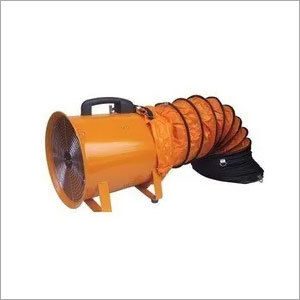- Home Page
- Company Profile
-
Our Products
- Dust Collector
- Compact Dust Collector
- Dust Collection System
- Portable Dust Collection Unit
- Multiple Bag Dust Collector
- Cartridge Dust Collector
- Panel Saw Dust Collector
- Portable Dust Collector
- Dust Collecting Equipment
- Woodworking Dust Collector
- Sanding Dust Collector
- Vertical Bag Dust Collector
- Dust Control Equipment
- Single Phase Vertical Bag Dust Collector
- Air Blower
- Fume Extractor
- Solder Fume Extractor
- Portable Fume Extractor
- Portable Fume Extraction Unit
- Laser Fume Extractor
- Soldering Fume Extractor
- Portable Fume Extractor With Flexible Hose
- Portable Welding Fume Extractor With Suction Arm
- Smoke Extractor
- Welding Fume Extractor
- Mobile Fume Extractor
- Portable Welding Fume Extractor
- Portable Fume Extractor Unit
- Industrial Fume Extractor
- Centrifugal Fan
- Single Inlet Centrifugal Fan
- Inline Centrifugal Fans
- PP Centrifugal Fan
- Centrifugal Duct Fan
- Centrifugal Air Fan
- Centrifugal Belt Drive Fan
- Cabinet Centrifugal Fan
- Portable Centrifugal Fan
- Direct Drive Centrifugal Fan
- Electric Centrifugal Fan
- High Speed Centrifugal Fan
- DIDW Centrifugal Fan
- Belt Driven Centrifugal Fan
- High Pressure Centrifugal Fan
- Direct Drive Centrifugal Fans
- Axial Flow Fan
- Blower Fan
- Cooling Fans
- Man Coolers
- Exhaust Fan
- Centrifugal Blowers
- Curved Impeller
- Industrial Blowers
- Axial Fans
- Ventilation Fan
- Inline Cabinet Fan
- Bifurcated Fans
- Duct Fans
- Cabinet Inline Fan
- Degasser Blower
- Turbo Blowers
- Blower Wheel
- Air Pollution Control Device
- Smoke Filtration System
- Induced Draft Fan
- Suction Blower
- Dust Collector
- More Info.
- Contact Us
Axial Fans
4000 INR/Piece
Product Details:
- Power 1-2.5kW Watt (w)
- Voltage 320 Volt (v)
- Type of Fan Axial Fans
- Power Mode AC
- Installation Type Duct
- Blade Material Cast Iron
- Click to View more
X
Axial Fans Price And Quantity
- 4000 INR/Piece
- 1 , , Piece
Axial Fans Product Specifications
- Axial Fans
- Cast Iron
- AC
- Duct
- 1-2.5kW Watt (w)
- 320 Volt (v)
Axial Fans Trade Information
- 15 , , Piece Per Day
- 2-3 Days
Product Description
The provided Axial Fan that enables gas to move through in a pivotal way, equivalent to the shaft over which the edges turn. In addition, the stream is axial at the exit and entry area. It is intended to deliver a pressure distinction and consequently pressure, to induce a stream through the fan. Elements that decide the working incorporate the shape and number of the blades. Our product has numerous applications incorporating into cooling towers as well as wind vessels. The outline parameters of our fan incorporate efficiency, pressure increment, power, and flow rate. Moreover, our fan typically contains lesser blades as contrasted to ducted fans. It ordinarily has a bigger range and a low pace than ducted fans.Axial Fan Features: Drum crease is constantly weldedFlange mounting gaps are puncturedHas simple to keep up bolt circleEvery part is cleaned by a quality cleanserAxial Fan Applications: 1. HVAC Systems: Axial fans are extensively used in heating, ventilation, and air conditioning (HVAC) systems for both residential and commercial buildings. They help in circulating air, maintaining comfortable temperatures, and improving air quality.2. Industrial Ventilation: In industrial settings such as factories, warehouses, and workshops, axial fans are used for ventilation to remove fumes, smoke, and airborne particles. They aid in maintaining proper air circulation and preventing the buildup of heat.3. Cooling Systems: Axial fans are crucial components in various cooling systems, including radiators for engines, electronic equipment cooling, and air-cooled condensers in refrigeration systems. They help dissipate heat by drawing cooler air over heat-generating components.4. Data Centers: In data centers and server rooms, where heat dissipation is critical for maintaining equipment performance and longevity, axial fans are employed in cooling systems to ensure proper airflow and temperature regulation.5. Agricultural Applications: Axial fans are used in agricultural settings for ventilation in livestock barns, poultry houses, greenhouses, and crop drying facilities. They help control humidity, remove stale air, and maintain optimal conditions for plant growth or animal health.6. Automotive Cooling: Axial fans are utilized in automotive cooling systems, such as radiator fans and condenser fans, to regulate the temperature of engines and air conditioning systems by dissipating heat.7. Electronic Equipment: Axial fans are incorporated into electronic devices such as computers, servers, and telecommunications equipment to prevent overheating and ensure proper functioning by facilitating airflow around sensitive components.8. Marine Ventilation: In marine applications, axial fans are used for ventilation aboard ships, submarines, and offshore platforms to maintain air quality, control humidity, and remove odors or hazardous gases.9. Tunnel Ventilation: Axial fans play a crucial role in tunnel ventilation systems to remove pollutants, smoke, and stale air, as well as to control air circulation and maintain safe conditions for traffic.10. Mining and Tunneling: In mining operations and tunneling projects, axial fans are employed for ventilation to provide fresh air, control dust levels, and ensure the safety and comfort of workers.Axial Fans FAQ: Q. What is an axial fan?Ans: An axial fan is a type of mechanical device that consists of rotating blades to move air or gas parallel to the fans axis. It generates airflow in a straight line, as opposed to centrifugal fans that produce airflow perpendicular to the fans axis.Q. How do axial fans work?Ans: Axial fans work by rotating blades (propellers) that draw air in and push it out along the same axis as the fans rotation. The movement of the blades creates a low-pressure area behind them, causing air to flow in the direction of the rotation.Q. What are the main components of an axial fan?Ans: The main components of an axial fan include the blades (propeller), motor, housing or casing, inlet and outlet ports, bearings, and sometimes a grille or guard for safety.Q. What are the advantages of axial fans?Ans: Advantages of axial fans include their ability to move large volumes of air at relatively low pressures, their compact design, energy efficiency, and suitability for applications requiring high airflow rates with low pressure differentials.Q. Where are axial fans commonly used?Ans: Axial fans find applications in various industries and settings, including HVAC systems, industrial ventilation, cooling systems (such as radiators and electronic equipment cooling), agriculture (livestock barns, greenhouses), automotive cooling, data centers, marine ventilation, mining, and tunneling.Q. What factors should be considered when selecting an axial fan?Ans: Factors to consider include airflow requirements, pressure or static pressure needed to overcome resistance, fan size, power consumption, noise level, environmental conditions (temperature, humidity, corrosive elements), and any specific requirements of the application.Q. How do I maintain an axial fan?Ans: Maintenance typically involves periodic cleaning of the fan blades and housing to remove dust and debris, lubrication of bearings if applicable, inspection of electrical connections, and ensuring that the fan is operating properly without unusual noise or vibration.Q. Can axial fans be used for ducted applications?Ans: Yes, axial fans can be used in ducted applications where airflow needs to be directed through a confined space. However, the duct design and configuration should be optimized to minimize resistance and pressure losses.Q. Are axial fans suitable for variable speed control?Ans: Yes, many axial fans can be operated with variable speed control to adjust airflow according to changing requirements. This can help optimize energy efficiency and airflow management in various applications.Q. What are the differences between axial fans and centrifugal fans?Ans: The main difference is in the direction of airflow. Axial fans produce airflow parallel to the fans axis, while centrifugal fans generate airflow perpendicular to the fans axis. Additionally, axial fans are typically more suitable for applications requiring high airflow rates at low pressures, whereas centrifugal fans are better for applications with higher pressure differentials.FAQs of Axial Fans:
Q: What is the power mode of the Axial Fans?
A: The Axial Fans operate on AC power mode.Q: What is the material used for the blades in Axial Fans?
A: The blades of Axial Fans are made of cast iron.Q: What type of installation is required for Axial Fans?
A: Axial Fans are designed for duct installation.Q: What is the voltage requirement for Axial Fans?
A: Axial Fans require a voltage of 320 Volt (v).Q: What is the power rating of Axial Fans?
A: The power rating of Axial Fans ranges from 1 kW to 2.5 kW.Q: What type of fan are these?
A: These are Axial Fans.Tell us about your requirement

Price:
Quantity
Select Unit
- 50
- 100
- 200
- 250
- 500
- 1000+
Additional detail
Mobile number
Email








 Send Inquiry
Send Inquiry Send SMS
Send SMS Call Me Free
Call Me Free
